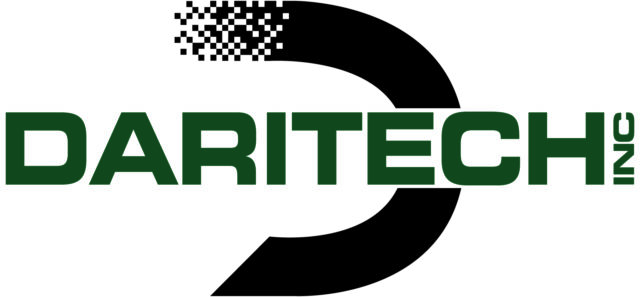Can dairy farmers capture energy contained in manure produced by their cows and improve their operation’s sustainability, profitability and public image?
Minnesota dairy farmer Dennis Haubenschild says it’s entirely possible and each dairy producer can create the plan that best suits their individual operation.
“We’re doing all we can to let the public know how sustainable our dairy is and how sustainable the dairy industry is as a whole,” Dennis says. “I’ve been developing a sustainable operation for the last 40 years. I’m working with DMI (Dairy Management Incorporated) to determine the dairy industry’s carbon footprint as a whole and decide how we can reduce it. We want our country’s dairies to be as efficient and sustainable as possible.”
Haubenschild says dairy producers will find assistance for developing a digester design tailored to their operation through AgSTAR, an Environmental Protection Agency program encouraging the use of methane recovery technologies at confined animal feeding operations.
“AgSTAR partners with farmers to develop digesters,” Dennis says. “We started our project in June 1999 and by that October it was fully operational. We have a 150kW generator and we use waste heat recovery for the digester operation and to heat the floors in the dairy. We keep our floors warm enough they don’t freeze during the winter.”
Haubenschild’s 130-foot long, 30-foot wide and 14-foot high digester employs anaerobic decay to produce 500,000 gallons of liquid manure each year – 20,000 gallons each day. The digester maintains a constant 100°F and uses 1,800 feet of piping to transport the manure. It produces 72,500 cubic feet of biogas – 60 percent methane and 35 percent carbon dioxide – per day, 50 cubic feet per minute.
The digester moves manure through a covered, 350,000 gallon in-ground concrete tank. The manure is heated by pipes suspended inside the digester, creating conditions necessary for biogas. The biogas is captured and used to power a 130kW internal combustion engine generator, which creates electricity. The hot water used in this process goes to heat the barn floor after it’s recovered from the generator’s cooling jacket.
The digester supplies power to a local electric company and by Jan. 16 had produced a total of 9,684,040 kilowatt hours of electricity. It supplies electricity for the dairy and 60 additional households. One of the dairy farm’s pickups is running on biogas produced by the digester.
“Biogas produced from the manure generated every day by 100 cows contains about the same amount of energy as a barrel of oil,” Haubenschild says. “It also produces the same amount of energy as 50 tons (half a railroad car) of coal. I just returned from a tour in Germany where digesters are very common. Many are run on corn silage. Their country is about 15 years ahead of the U.S. in terms of utilizing renewable energy. One of the things I hope to accomplish in working with DMI is educating producers about the potential for using resources in the nutrients generated by their dairy.”
It was Haubenschild’s father who stressed to him the importance and benefit of utilizing the manure from his dairy operation. As a child, Dennis observed his father applying manure to fields and recalls his father’s instruction about the annual potential found in the nutrients.
“He always told us that was next year’s corn crop,” Haubenschild says. “He would be upset with us if we wasted any of the manure because he knew how valuable it was.”
A college history class that outlined how Germany used anaerobic digesters during World War II to make electricity and biogas caught Haubenschild’s attention. He accessed resources at Sweden’s Lund University to learn more about digesters and began formulating an idea about how to enhance the use of nutrients at the dairy.
“I always thought a digester would be a good way to add value to a dairy farm and make it more sustainable,” he says. “I wrote a paper in college, defining agricultural sustainability. It’s a system that produces abundant food and energy without depleting the earth’s resources or polluting its environment. My dad and I always referred to it as earth-neutral or carbon-neutral. The only thing about that definition that’s changed over the years is the word ‘sustainable’. Making use of these resources and reducing impact on our environment is not new technology.”
In addition to providing the heat, electricity and biogas Haubenschild is using, the digester liquefies the manure so nutrients are more readily absorbed by plants.
“Plants can only absorb about 50 percent of the nutrients in raw manure,” Haubenschild says. “When those nutrients are broken down by the anaerobic or aerobic bacteria, soil pH levels go from 6 to 7.5 or 7.8 and the plant can make better use of the nutrients. It takes less herbicide at that high pH level to control weeds, too.”
The most recent development in Haubenschild’s work with the digester is the production of hydrogen that can be used in a fuel cell. Among the potential uses are supplying hydrogen fueling stations and providing hydrogen for use in rural transport.
“This process was developed in 1909,” Haubenschild says. “It was the first economically feasible method of directly synthesizing ammonia from hydrogen gas and atmospheric nitrogen. Fritz Haber and Carl Bosch worked on it because of the increasing demand for nitrogen fertilizer at that time. It was the first industrial process to use high pressure (200-400 atmospheres) for a chemical reaction. A catalyst, usually iron, lets it take place at a moderate temperature, between 750 and 1,200°F. Immediate removal of ammonia as it is formed favors formation of more of it. The process is still the cheapest means of industrial nitrogen fixation. It’s a basic process of the chemical industry.”
Haubenschild also partnered with Environmental Credit Corporation, a carbon credit aggregator, to sell carbon credits to the Chicago Climate Exchange. The Environmental Credit Corporation certified and registered the Haubenschild’s carbon credits with the CCE and later traded them for cash. The credits are based on the amount of methane gas the Haubenschilds keep from entering the atmosphere by capturing them in the digester.
The challenges producers face in developing their own digester system are predominantly those related to finding the best design for their operation. Once a digester is in operation, providing energy to public utilities can also prove to be a challenge.
“The first year we contracted with our local power company to provide electricity, we signed a five-year one-page contract,” Haubenschild says. “Now it takes several months to negotiate a multi-page one-year contract. The mindset in America toward renewable energies is very different from that of other countries. In Europe, the government is helping set goals and providing assistance to reach them. Here it’s not always easy to find support for developing renewable energy systems.”
In spite of the trials that producers may face in establishing a digester and harvesting the benefits it provides, Haubenschild says he believes development of renewable energy technology is essential to the future of agriculture and U.S. energy supplies.
“Sustainable agriculture is achieved by using all of Mother Nature’s tools,” he says. “We’ve shown that we can produce and use hydrogen biogas. When cogeneration and tri-generation applications are used, overall energy efficiencies of more than 70 percent are possible. Agriculture has to play a major role in supplying domestic energy needs.” ANM
Loretta Sorensen
Freelance writer





